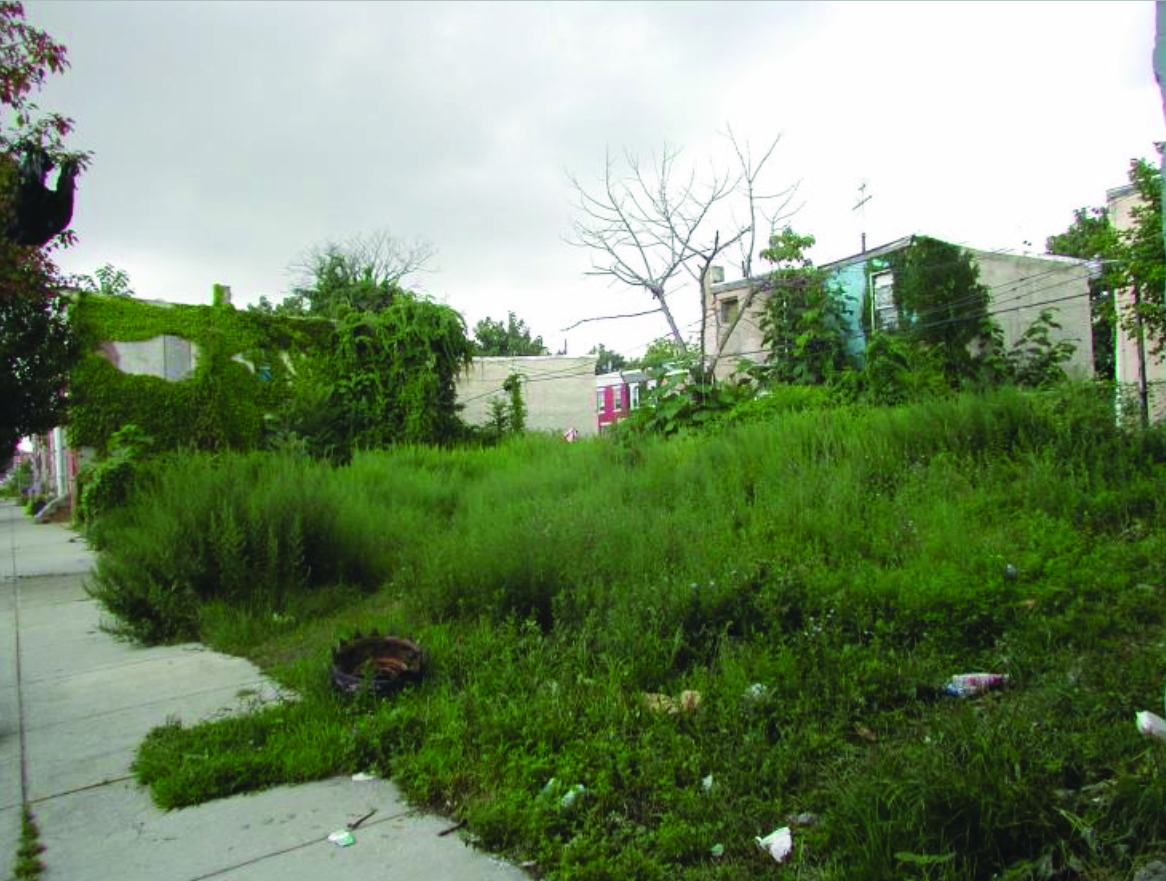Table Of Content
- Los Angeles Violent Crimes
- new developments in such a way where the opportunity for crime is reduced,
- Violent Crime Comparison (per 1,000 residents)
- you and develop a comprehensive CPTED
- heavily the importance of the feeling of safety and security. Perception is
- is the proper design and effective use of a built environment, which can lead to

The enhanced visibility this creates is known as “passive surveillance”, which can deter some offenders. Los Angeles City Councilmember Laura Chick in 1995 created an inter-agency “Design Out Crime” task force, led by representatives of the City Planning Department and Police Department, but including eight City agencies. The task force developed a set of “Design Out Crime” guidelines, adopted officially by the City Council, for distribution to developers, architects, urban planners and others involved in the design of building projects. The guidelines are also used by City agencies, such as the Housing Department, as criteria in evaluating projects worthy of City funding.
Los Angeles Violent Crimes
The City’s Information Technology Agency in 1997 completed a landmark video on this subject, probably the first comprehensive video produced anywhere explaining CPTED principles. A 15-minute version of this Design Out Crime videotape is targeted at community and neighborhood watch groups interested in applying these techniques in their homes and small businesses. A second, 30-minute version of this videotape, hosted by actress Joanna Cassidy, demonstrates more detailed techniques for use in new development projects by architects, developers, real estate professionals, and urban planners. A collaborative relationship between the problem owner and broader stakeholders is formed (Paton and Dorst, 2011) in the exploration of the problem.
new developments in such a way where the opportunity for crime is reduced,
For less than half the cost of one police officer for one year, the City has developed ground-breaking crime prevention work of enduring value. These City of Los Angeles General Funds are the only monies allocated to the program thus far. By 2004[update], elements of the CPTED approach had gained wide international acceptance due to law enforcement efforts to embrace it. The CPTED term "environment" is commonly used to refer to the external environment of the place. Jeffery's intention that CPTED also embrace the internal environment of the offender seems to have been lost, even on those promoting the expansion of CPTED to include social ecology and psychology under the banner of 2nd Generation CPTED. Wide-ranging recommendations to architects include the planting of trees and shrubs, the elimination of escape routes, the correct use of lighting, and the encouragement of pedestrian and bicycle traffic in streets.

Violent Crime Comparison (per 1,000 residents)
The problems are apparent around Los Angeles and most major cities; decaying public housing projects, abandoned public spaces, unsafe convenience stores, and even burglarized single-family homes. Cities may ameliorate all of these conditions through careful attention to CPTED principles. Image/maintenance and activity support provide the community with reassurance and the ability to inhibit crime by citizen activities.
you and develop a comprehensive CPTED
An often overlooked contribution of Jeffery in his 1971 book is outlining four critical factors in crime prevention that have stood the test of time. These are the degrees to which one can manipulate the opportunity for a crime to occur, the motivation for the crime to occur, the risk to the offender if the crime occurs, and the history of the offender who might consider committing the crime. The first three of these are within the control of the potential victim while the last is not. 4) Maintenance and Management — Keeping areas “clean and green” is the minimum standard for scheduled maintenance. Do not let things like graffiti, garbage and/or damaged property be seen by your positive users. Activity Support — Probably the biggest advocate, especially to a parks system, is the amount of space you have to add positive actors to your park.
In front yards, use waist-level, picket-type fencing along residential property lines can help control access and encourage surveillance. Use shoulder-level, open-type fencing along lateral residential property lines between side yards and extending to between back yards. They should be sufficiently clear of landscaping to promote social interaction between neighbors. Poorly defined front and rear yards could be defined by a small fence or by regular maintenance of the surrounding landscape.

Tests show that the application of CPTED measures overwhelmingly reduces criminal activity. The most efficient, least expensive way to provide security is during the design process. Designers who are called on to address security and crime concerns must be able to determine security requirements, must know security technology, and must understand the architectural implications of security needs. 3) Territorial Reinforcement — This concept involves facilitating the process of turning an area over to legitimate users who will take ownership of the space and care for it. This helps eliminate or reduce nuisance behaviors because bad actors using the space receive increased monitoring.
surveys. Our CPTED training
She also suggested that mixed land uses and other elements of community-building and participation creates a sense of community and enhances the “unconscious network of informal social controls” existing to control crime. Why would you wait for a crime to occur if you have the means to prevent it from happening? Law enforcement agencies often spend too much time and resources on reactionary practices regarding crime instead of implementing preventative measures. Crime prevention strategies and community policing are evolving concepts that need to be applied by law enforcement agencies and park systems nationwide.
is the proper design and effective use of a built environment, which can lead to
Achievements of the ProgramThe Design Out Crime program has already changed City government’s organizational culture in reviewing development projects. Multiple agencies now work cooperatively to assure that new development projects and public spaces are designed to maximize their safety. Because the City Council has given its official stamp of approval to a set of CPTED principles, the City’s leadership has effectively institutionalized this way of thinking into City government. For example, “activity support” encourages bringing intended users to a space to make it less hospitable to criminal activity.
If police expertise is engaged in the design and planning process and the principles of CPTED applied, opportunities for crime and disorder, and consequent calls for service, are reduced and safer communities are created. A Times analysis from 2022 found that stores in higher-income areas locked up fewer items even in places where property crime rates were higher, creating an additional burden for shoppers in certain neighborhoods. And inconsistencies in how locked merchandise is released to customers — sometimes workers hand you items to put in your cart, other times they escort merchandise to the register — raise the same questions of racial profiling that have long plagued retail establishments.
Campus safety through architecture, landscape architecture and urban design - UNM Newsroom
Campus safety through architecture, landscape architecture and urban design.
Posted: Sun, 26 Feb 2023 08:00:00 GMT [source]
Protection of these assets is a concern and should be considered throughout the design and construction process. For multi-family developments, elements such as drain pipes, parapets and ledges should not be located near windows, corridors or balconies. If unavoidable, they should face parking lots, children’s playground or roads to allow for natural surveillance. Another method is to build houses, streets, transport hubs and retail settings in a way that promotes visibility. This can include making windows and entrances of buildings face each other and clever use of lighting.
As of 2004[update], CPTED is popularly understood to refer strictly to the Newman/Crowe type models, with the Jeffery model treated more as multi-disciplinary approach to crime prevention which incorporates biology and psychology, a situation accepted even by Jeffery himself. A revision of CPTED, initiated in 1997, termed 2nd Generation CPTED, adapts CPTED to offender individuality, further indication that Jeffery's work is not popularly considered to be already a part of CPTED. In 2012 Woodbridge introduced and developed CPTED in prison and showed how design flaws allowed criminals to keep offending. WBDG is a gateway to up-to-date information on integrated 'whole building' design techniques and technologies. The goal of 'Whole Building' Design is to create a successful high-performance building by applying an integrated design and team approach to the project during the planning and programming phases. Putting together a CPTED plan involves a variety of departments (marketing, planning and design, maintenance, media relations, executives, etc.) and each specific principle of design will show individually how much the practice can benefit you and your organization.
Having a positive image in the community shows a sense of pride and self-worth that no one can take away from the owner of the property. Natural access control limits the opportunity for crime by taking steps to clearly differentiate between public space and private space. By selectively placing entrances and exits, fencing, lighting and landscape to limit access or control flow, natural access control occurs. During this period Sorensen worked with Ronald V. Clarke and the Sparta team to develop a new CPTED Curriculum that used Situational Crime Prevention as an underlying theoretical basis for CPTED measures. A curriculum was developed and trained to stakeholders in public and assisted housing, and follow-up CPTED assessments were conducted at various sites. The Sparta-led CPTED projects showed statistical reductions in self reported FBI UCR Part I crimes between 17% and 76% depending on the basket of CPTED measures employed in specific high crime, low income settings in the United States.


No comments:
Post a Comment